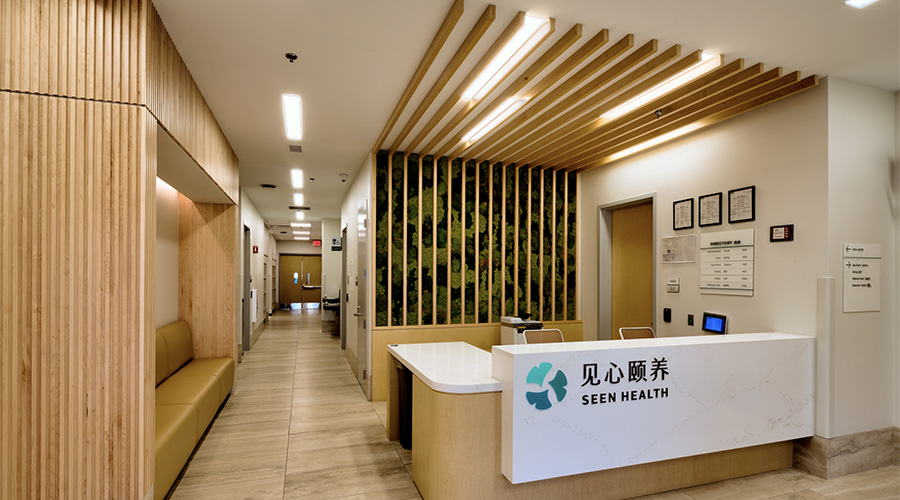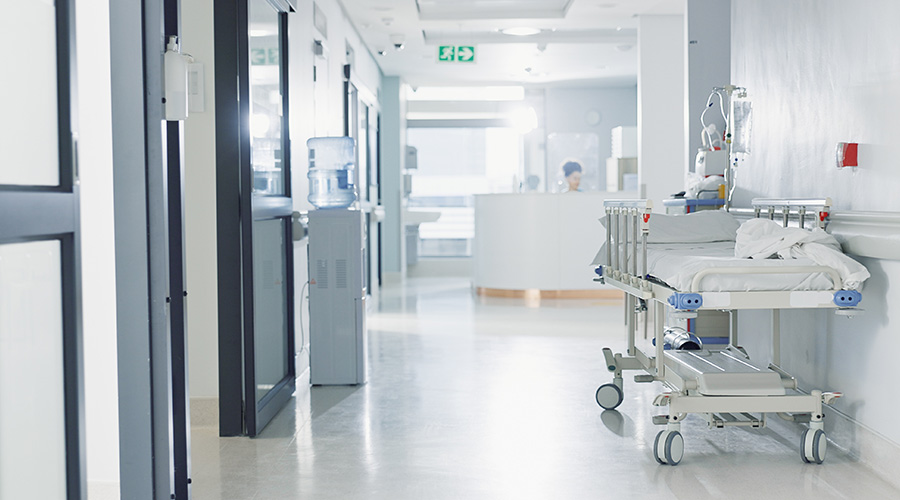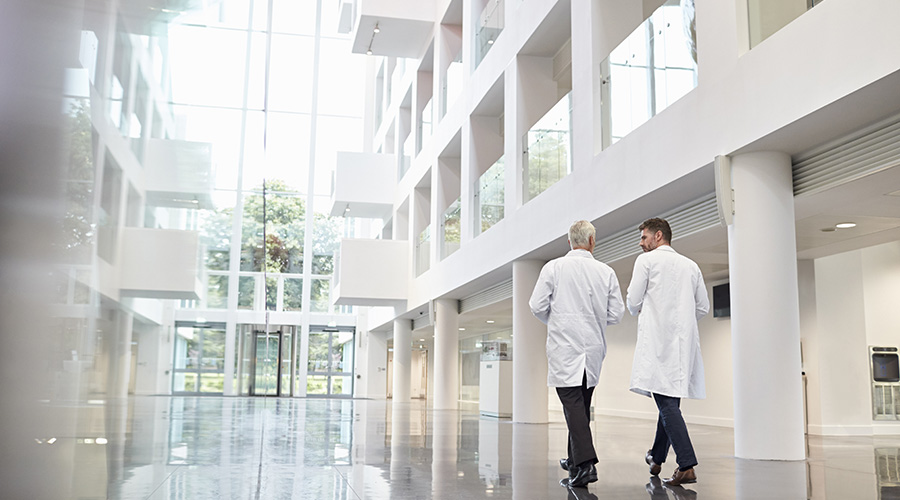The project specified Sloan’s vitreous china Designer Urinal and wall-mounted water closet, each paired with a Sloan SOLIS® solar-powered and sensor-operated flushometer to deliver an energy-efficient and clean flush complemented by touch-free technology.
Sloan’s vitreous china undermount lavatory with Optima® solar-powered deck-mounted faucets and matching soap dispenser provide a hygienic handwashing solution. Each Sloan vitreous china fixture features SloanTec Hydrophobic Glaze, a proprietary water-repellant glaze that inhibits the growth of germs and bacteria to make the fixtures easier to clean.
The building also includes a comprehensive set of other health, safety, and wellness enhancements, such as touch-free thermal scanning at the lobby security desk, continuous floor-to-ceiling low-E glass to provide the maximum amount of light into the building, and much more. All restrooms were constructed with one additional fixture than required by Chicago city code to help enhance social distancing measures.
Architectural firm Lamar Johnson Collaborative (LJC) collaborated with Chicago-based design-build firm, Clayco, on the project. Interior designer Holly Hunt designed the Fulton East lobby.
For more information on Sloan’s work in delivering touch-free commercial restroom solutions, visit their webpage on hygiene and wellness solutions. Follow Sloan on Facebook, Twitter, Instagram, and LinkedIn for additional updates.
June 26, 2020
Topic Area: Press Release
Recent Posts
 How Efficiency Checklists Help Hospitals Save Energy, Water and Money
How Efficiency Checklists Help Hospitals Save Energy, Water and Money
Keith Edgerton explains how a simple, systematic tool can help healthcare facilities identify savings, support sustainability goals and reinvest in long-term decarbonization.
 Designing with Heart: Seen Health Center Blends Cultural Warmth and Clinical Care
Designing with Heart: Seen Health Center Blends Cultural Warmth and Clinical Care
Case study: The Alhambra-based facility uses Wilsonart Woodgrains to create a space where comfort, tradition and durability come together for an elevated senior care experience.
 Rutgers Health and University Hospital Breaks Ground on Campus Expansion
Rutgers Health and University Hospital Breaks Ground on Campus Expansion
The groundbreaking follows the long-awaited demolition of administrative offices built in the 1970s.
 What to Consider When Modernizing Healthcare Facilities
What to Consider When Modernizing Healthcare Facilities
While there has been a call to preserve old buildings, healthcare facilities need to weigh the options of patient care.
 Corewell Health Beaumont Troy Hospital to Build New Tower
Corewell Health Beaumont Troy Hospital to Build New Tower
The tower is expected to be completed in 2030.